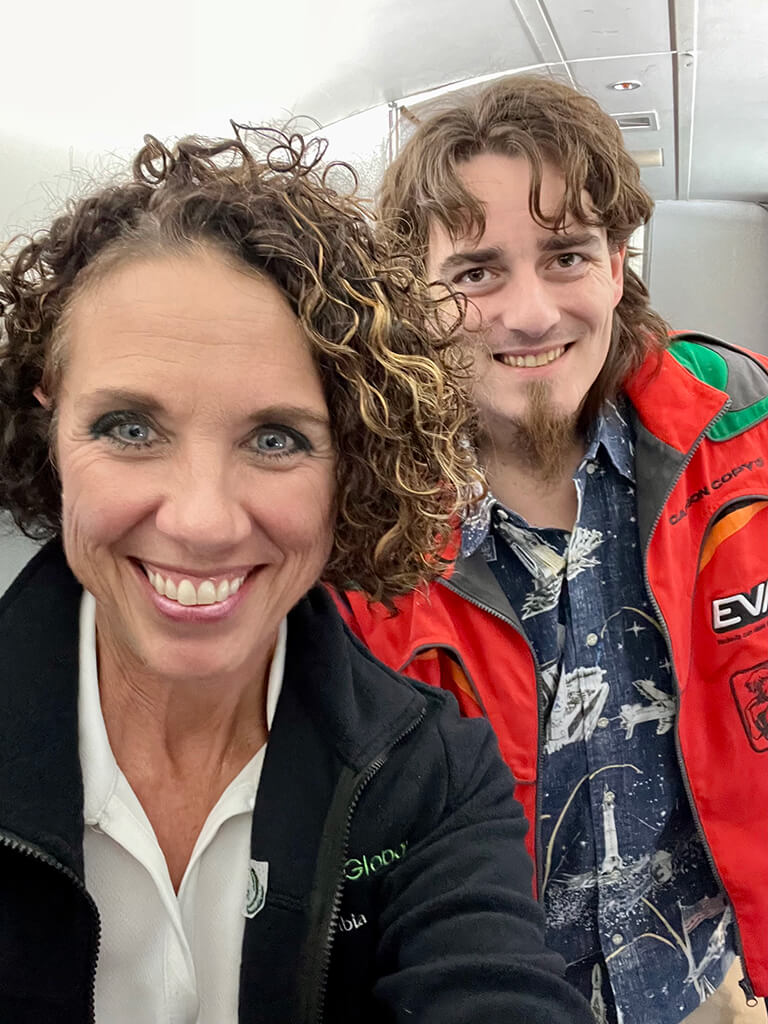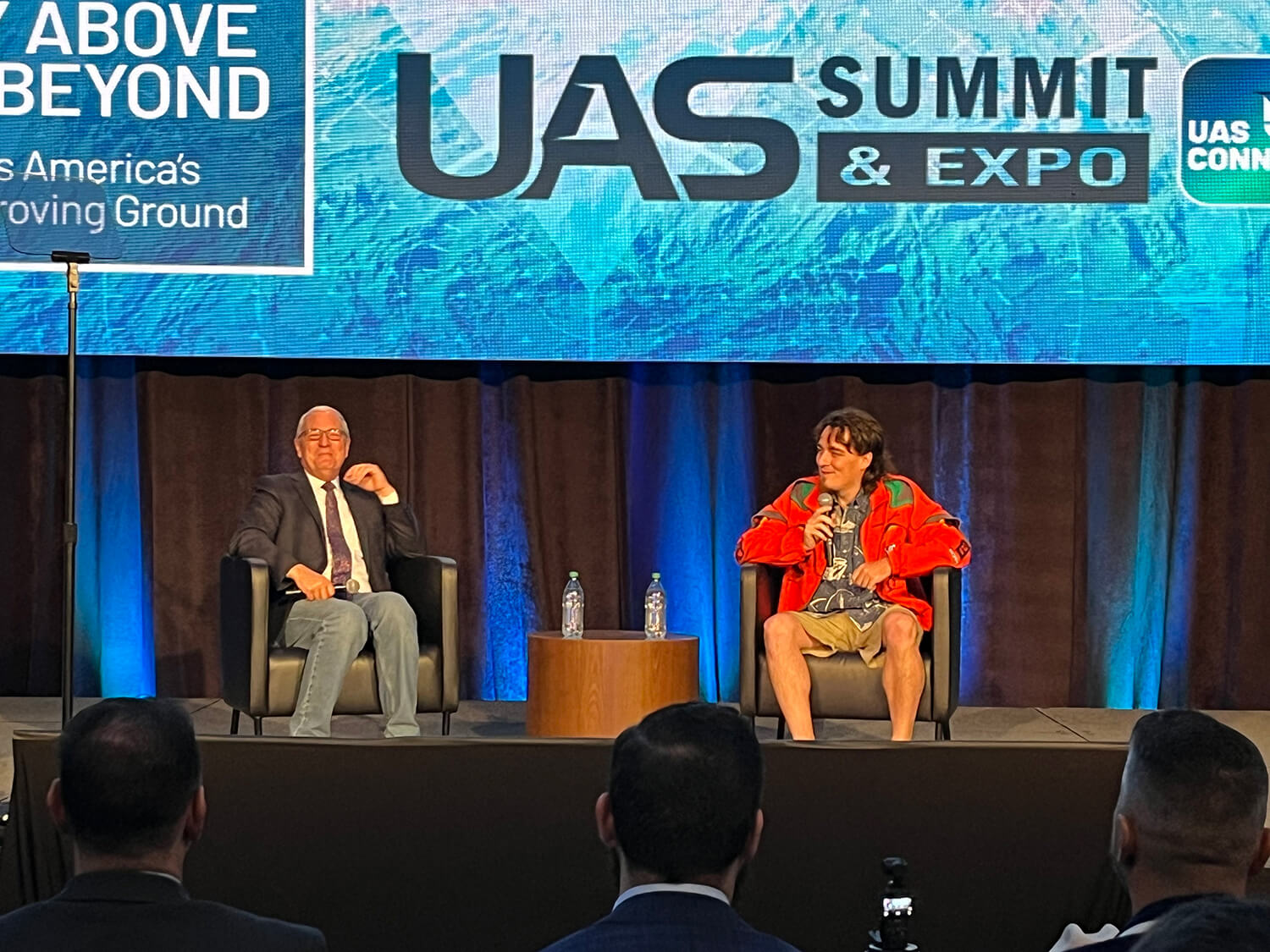Recent conflicts have taught us that the changing landscape of national defense requires us to innovate more rapidly to keep pace with our adversaries. Change-makers are needed at every level – in Congress, the Pentagon, various agencies and certainly in industry – to challenge the status quo. One such visionary is Palmer Luckey, founder of Anduril Industries, creators of uncrewed, autonomous systems and other cutting-edge technologies for complex defense challenges. At the UAS Summit 2024, Luckey discussed his journey, from creating the Oculus Rift virtual reality (VR) headset to founding a leading defense technology company, and provided invaluable insights into how our nation can unleash the power of other tech innovators in support of national defense.
The Origins and Journey of a Tech Entrepreneur in National Security
Luckey’s interest in national security began working on a program called Brave Mind, which used virtual reality to treat veterans with post traumatic stress disorder. This experience exposed him to real-world applications of technology in the defense sector and ultimately inspired his creation of Anduril.
After selling Oculus to Facebook and eventually parting ways with the company, Luckey knew he wanted to work in the national security space. He gathered a core group of like-minded individuals who believed in solving important problems in national security using emerging technologies such as advanced autonomy, machine learning, computer vision and networking.
When Anduril was founded, AI was not yet widely recognized as a transformative technology in defense, but Luckey and his team saw its potential to solve the real problems of the modern battlefield. This, combined with his experience with VR tech, led to several groundbreaking applications in the defense sector. For example, Anduril has been collaborating with Microsoft on virtual and augmented reality (AR) technologies for military use. These advanced sensor and display systems aim to enhance soldier capabilities in the field by providing real-time information and situational awareness. This integration of AR and VR technologies in military applications will enable troops to access vital data overlays, receive visual cues for navigation and even simulate complex scenarios for training purposes.
In addition to its venture with Microsoft to enhance military mix-reality headsets, the company recently scored a $1.5 billion funding round to scale manufacturing capabilities. Anduril plans to use the money to build a 5 million-square-foot factory for producing thousands of autonomous weapons systems annually. Luckey calls it Arsenal-1.
In addition to securing a $1 billion contract with the U.S. Special Operations Command, the company also came out on top for the Air Force’s Collaborative Combat Air Force (CCA) program.
None of this was easy. When Luckey created Anduril, he had to do so largely with his own funding. Widespread skepticism about the need for AI-driven autonomous systems from the venture capital (VC) crowd, coupled with difficult-to-break-into defense structures, created barriers to entry – which Anduril ultimately overcame. When the conflict in Ukraine prompted a reevaluation of warfare deterrence and preparedness strategies, Luckey’s team was ready to answer that call.
Government Funding and Private Investment Challenges for Technological Innovation
As he reflected back on the challenges he faced as a defense startup, Luckey ranked attracting VC investment high on the list. He shared his perspectives on overcoming the skepticism often associated with investing in defense-related companies.
To scale up VC involvement in defense startups, Luckey suggested first to educate investors on the long-term potential of defense technologies and then demonstrate clear paths to profitability and government contracts. Highlighting the dual-use nature of many defense innovations, he noted, presents unique opportunities with the type of potential return on investment (ROI) that should encourage a shift in VCs’ perceptions of bankrolling defense tech.
To make a winning pitch, Luckey said that small, innovative companies seeking to enter the defense industry should focus on solving specific, high-priority problems identified by the Department of Defense (DoD). Building strong relationships with potential customers within the military and government agencies can help to identify these needs.
Once a real tech gap has been identified, Luckey said, companies must then demonstrate the ability to deliver solutions quickly and efficiently. Leveraging commercial off-the-shelf (COTS) technologies when possible can help reduce costs and development time.
But the real secret sauce, according to Luckey, is to focus on tasks where your company already shines and others do not and that also align with Pentagon priorities and Congressional funding.
He noted, “I think one of the reasons we’ve done pretty well is because we have been able to get to work on something…that we can do well…that we think other people are doing pretty poorly, or not at all.”
Anduril’s success has been partly due to its ability to identify problems that the Pentagon cares about (meaning, they have money for) and that can be addressed with urgency.
Luckey explained, “Know if there’s no funding for it to actually happen at scale. You know, I hate to say it, but it doesn’t matter how important the problem is. Perception is reality. Everyone has to agree that it’s a problem to make things happen.”
For Luckey, the government’s role extends beyond direct funding, however. He believes that the government’s job should be to also inspire private capital to invest in defense technologies.
Incentivizing Private Investment in Research and Development

To further incentivize private investment, Luckey proposed that the government offer more frequent competitions for defense programs. Rather than awarding contracts to a single company for extended periods, he suggested recompeting programs every 24 months. This approach would allow companies that didn’t win initially to improve their technology and compete in future rounds. In theory, this would drive ongoing innovation and investment.
This strategy should work, he said, because if multiple companies believe they can win future contracts, this would encourage more private capital engagement. In turn, this virtuous circle would spur continuous improvement in defense technologies.
By creating a more dynamic and competitive environment, the government can foster a culture of innovation and ensure that the best technologies are continually developed and deployed for national security purposes.
To further incentivize private investment, Luckey proposed that the government offer more frequent competitions for defense programs. Rather than awarding contracts to a single company for extended periods, he suggested recompeting programs every 24 months. This approach would allow companies that didn’t win initially to improve their technology and compete in future rounds. In theory, this would drive ongoing innovation and investment.
Besides opening up competition, Luckey thinks the government should also inspire private capital to invest in defense technologies. Based on his own experience convincing private investors that the U.S. government will reward investment in research, development, and facilities, his company has been able to raise significant private capital.
While the majority of scientific research and development in the country used to be performed by the government, the private sector now drives much of this innovation. The government should create structures that encourage private market investors to multiply the effects of government funding, he said.
He elaborated, “And so I think the most powerful thing that we can do on the government side is to come up with structures that convince the private market investors to hugely multiply the effects of the government. The government’s putting in $1. There better be some private investors who are putting in $10. I don’t think we need taxpayers to be able to pay for it all.”
Doing this requires a culture shift to one of smart risk-taking within government and defense organizations. Innovation often requires calculated risks. That means the current system’s proclivity towards risk-averseness needs to change.
Breaking Through Traditions: Unleashing AI Innovation in Government
To foster a more innovative environment, Luckey suggested a few simple steps that government agencies can take. Implementing reward systems for successful risk-taking, creating protected spaces for experimentation within government agencies and encouraging cross-pollination of ideas between the private sector and government can encourage investments in outside-the-box technology.
Even when a company seems to have broken through the initial funding barriers to produce a great product, it must then successfully navigate the often slow-moving acquisition process.
While admitting that these traditional clumsy and bureaucratic defense processes can hinder progress, Luckey nevertheless emphasized the importance of working with the system as it exists now. He elaborated, “You kind of have to work with the system as it is. And that sometimes means finding opportunities in areas where you can move quickly and ignoring opportunities where it’s just not going too fast.”
Balancing Innovation and Security in Aviation Technology Development
Challenges for tech companies new to the defense space continue even after being awarded a contract. As the defense industry pushes forward with new technologies, there’s a delicate balance to strike between innovation and security, particularly in the aviation sector.
Integrating new aviation systems with legacy infrastructure and airspace presents unique issues. The aviation industry must navigate the complexities of introducing cutting-edge systems without compromising safety or disrupting current operations. This requires close collaboration between innovators, regulators and existing industry players to ensure a smooth transition and integration of new technologies.
An apparent proponent of the modular open systems approach (MOSA), Luckey said, “…I would rather look at integration from the other side…how can we take these new systems and…integrate (them) into the world. That is your thing needs to be able to talk over existing radios. We need to…. understand what that aircraft is going to do without having to install a whole bunch of new equipment.”
The development of advanced defense technologies also inevitably raises security concerns. Maintaining security while promoting open access and innovation in technology development can be difficult, especially when dealing with dual-use technologies. Companies like Anduril, he said, must be vigilant about protecting sensitive information and technologies while still fostering collaboration and progress. This often involves implementing robust security protocols, carefully vetting partnerships and employees and safeguarding information.
Also on the topic of security, Luckey addressed the importance of domestic manufacturing, particularly with the UAS industry. He emphasized the need for greater control over supply chains to mitigate risks associated with foreign dependencies. Reshoring manufacturing capabilities serves multiple purposes. It will ensure the integrity and security of critical defense technologies by reducing vulnerabilities to supply chain disruptions. It will also enable us to maintain technological leadership in key industries. A positive by-product of this is the creation of high-skilled jobs and the fostering of economic growth. According to Luckey, by prioritizing domestic production of essential components and technologies, the defense industry can better safeguard national interests and maintain a competitive edge in the global arena.
A Exemplar to Succeeding in Defense Technology…or a One-Off Outlier?
Anduril has beaten the odds to become one of the top defense technology contractors. Is this a fluke or can Palmer Luckey’s insights provide a comprehensive guide to other tech startups on how to address challenges and take advantage of the opportunities presented by defense industry opportunities?
Regardless, Palmer Luckey’s experiences with Anduril Industries provide valuable insights for businesses about how to work in the defense sector. His approach to innovation, overcoming challenges and strategic investment in emerging technologies offers a roadmap for companies seeking to introduce their tech to national security clients. The guiding principles of agile development, smart risk-taking and strategic investment in emerging technologies simply makes good sense, for everyone..
Navigating Government Processes
To succeed in the defense sector, Luckey advises:
- Focus on solving specific, high-priority DoD problems
- Build strong relationships with military and government agencies
- Demonstrate quick and efficient solution delivery
- Leverage commercial off-the-shelf technologies when possible
Breakthrough Innovations
Anduril has made significant strides in defense technology:
- Collaborating with Microsoft on AR and VR for military applications
- Securing a $1.5 billion funding round for manufacturing expansion
- Winning a $1 billion contract with U.S. Special Operations Command
- Leading the Air Force’s Collaborative Combat Air Force program

